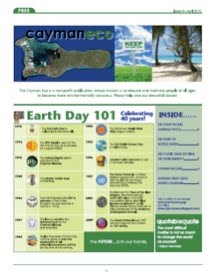Cayman
Compass
May 4, 2017
May 4, 2017
Plans to turn
part of the Barkers peninsula into a national park, protected from development,
have taken a step closer after the approval of 11 pieces of land on Grand
Cayman and Little Cayman as the islands’ first protected areas.
The National
Conservation Council agreed Wednesday to formally recommend that Cabinet
designate the chosen areas, including the publicly owned parts of Barkers, to
be protected under the National Conservation Law. The recommendations follow
three months of public consultation, which indicated overwhelming approval for
the plans.
After the vote,
Wednesday, Council Chair Christine Rose-Smyth said, “This is a historic step
forward in our mission of putting the National Conservation Law into place.”
The prospect of
a genuine National Park on the Barkers peninsula has been discussed for decades
but never legally enacted, in part because government does not own all of the
land.
The council now plans to
negotiate with Dart Real Estate, the major private land owner in the peninsula,
over broader plans to create a park, combining low impact leisure use with its
conservation goals. Read the whole story here.








